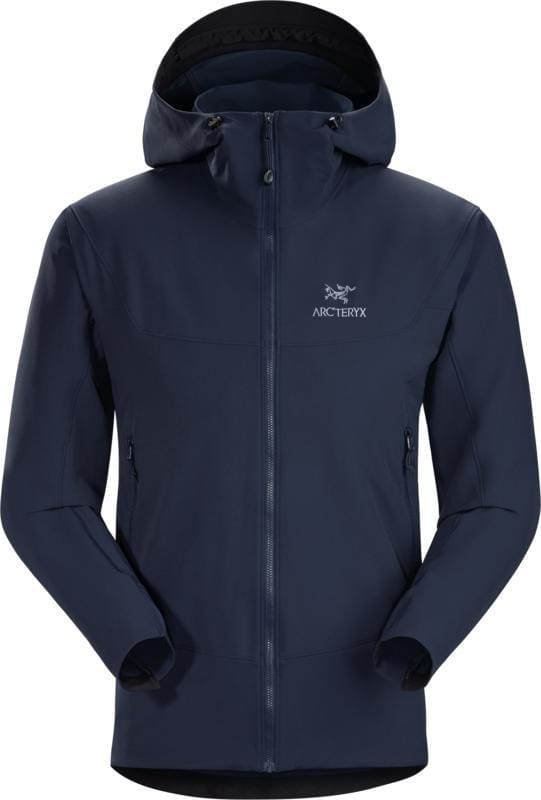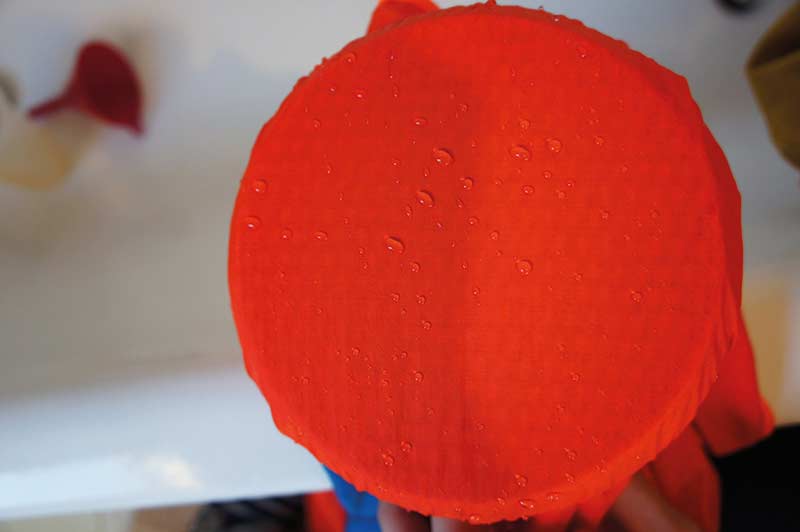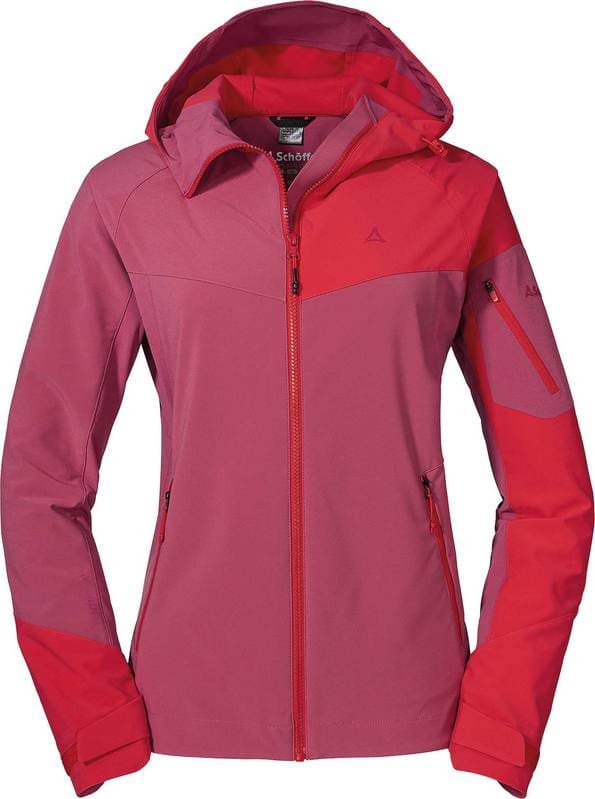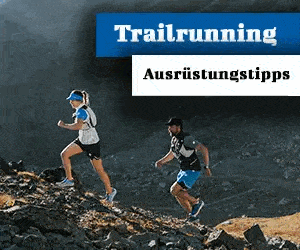Softshell jackets combine the advantages of a waterproof weatherproof jacket with those of an air-permeable fleece jacket. They are made of robust, elastic fabrics with a water-repellent impregnation against moisture and can be the perfect all-rounder in mountain sports - if you are willing to compromise. What you need to know about softshell jackets.
A contribution by Alexandra Schweikart - Bächli Bergsport
A perfect jacket is versatile, weatherproof, a product for every sport. But does that even exist? The term «softshell jacket» is a colorful collection of outerwear. From windproof, three-layer constructions with a membrane to extremely thin woven fabrics with a high percentage of elastane, through which the wind whistles airily and loosely. Textile designers in the outdoor industry can access an immense pool of different materials and make particular use of these for softshell jackets.
Softshell jackets are made from this material
As the name suggests, particularly soft materials are used for softshell jackets. For this purpose, a robust outer fabric is combined with a moisture-absorbing inner fabric or inner lining. The whole thing is mixed with elastane, also called spandex. The label then says, for example, 88% polyester, 12% elastane. For comparison: swimsuits have a spandex content of 25 percent and more.
Due to the adaptable material, even a not as successful cut fits like a glove.
Elastane mainly consists of polyurethane, which makes jackets elastic and tear-resistant at the same time. This also benefits the fit. Due to the adaptable material, even a not as successful cut fits like a glove. Some softshell jackets have a membrane laminated between the outer fabric and the inner lining, which makes the jackets windproof.

Moisture protection thanks to impregnation
In the mountains, not all good things come from above: On average, it rains 15 days a month in the Swiss Alps in summer! Softshell jackets are designed as the outermost layer, so they are equipped with a protective layer against rain and moisture. Long-term protection depends on the quality and durability of the water-repellent coating or «impregnation». For this purpose, chemicals are applied to the outside of the jackets in an immersion bath, in a spray system or in a vapor deposition system. The desired result is the same: water droplets roll off the surface. This water repellent property works well in light rain or snow.
However, softshell fabrics are not completely waterproof. This is the most important difference to hardshell - the waterproof weatherproof jacket.
However, softshell fabrics are not completely waterproof. This is the most important difference to hardshell - the waterproof weatherproof jacket. How well the impregnation holds can only be seen after a few days on tour and after a few washes. Important to know: If the impregnation diminishes so that water droplets no longer roll off the fabric, the jacket can simply be re-impregnated.

Wind protection through membrane or loden / felt principle
Softshell jackets are often referred to as "wind jackets": this is where their great strength lies. There are two ways to give a jacket windproof properties. The first option is a membrane laminated between the outer fabric and the inner lining. Here, for example, the well-known “Windstopper” from WL Gore is used, which has recently been listed under the brand name “Gore Infinium”.
Other membranes, such as Schöller (e.g. «c_change ™» membrane from Ortovox) are also used. But because membranes always (sometimes more, sometimes less) reduce the vapor permeability of the material, a second, more traditional method is still widely used. You can also make a jacket windproof by weaving the fibers so tightly that hardly any air can get through. The classic loden or felt principle is of course also used in a more modern way today, but technically implemented in a new way, for example by additionally drawing the fibers together with elastane.
Jackets with a membrane are clearly ahead when it comes to wind protection! However, fabrics that are not completely windproof allow a certain degree of air circulation, which is perceived as more pleasant during sporting activities because of the cooling effect.
Cold protection within limits
Thermal insulation is not exactly the top discipline of a softshell jacket - there are insulation jackets with down or synthetic fiber filling. As an all-round jacket (and in contrast to classic windbreaker jackets), softshells still have a certain warming function; and the more so, the thicker its material and the less cold air it lets in. Softshells in particular with a waffle fleece lining (e.g. Polartec Power Grid) keep the warmth on the body.


Versatile areas of application
Movement, movement, movement! The big plus of softshell jackets is their elasticity: You can take part in any contortion during sport, without the crackling and rustling of a hardshell jacket. And where there is movement, there is also warmth - the second big advantage of softshell jackets is their high level of water vapor permeability (in the vernacular "breathability"), which by far exceeds that of waterproof hardshells.
So you stay dry longer despite exertion and sweat. Another advantage is that softshells are quite easy to care for. The outer materials are mostly robust and smooth, some wear and tear from rock contact is less critical than with sensitive hardshell laminates. If you often go with a (heavy) backpack, you should choose a jacket with reinforced shoulders.
If you often go with a backpack, you should choose a jacket with reinforced shoulders.
As a windproof all-rounder, a softshell is typically used when hiking, climbing or on ski tours (on the ascent). The personal needs determine the individual equipment: some lightweight ones only come with a small pocket for keys and ID, other jackets offer several pockets, adjustment options and even zips under the arms for ventilation.
Conclusion - no advantages without disadvantages
No advantages without disadvantages! Thin fabrics are often not windproof, but they allow good ventilation. The robust membrane jackets are windproof, but stiff and less elastic. Thermally insulating softshell jackets score points in cold and wet weather, but are also heavy. The good news: with or without a membrane, insulating or wafer-thin - all jackets reliably let moisture out when you sweat.
So if you can do without the best possible moisture protection and are looking for a "soft" alternative to hardshell, which is many times more water vapor permeable than hardshell jackets, then a softshell jacket is definitely the right choice.
That might interest you
- Light and warm: the Ghost Whisperer down jacket from Mountain Hardware
- These 4 grams can save your life: Recco reflector
- Gift ideas for climbers and boulderers
- The lightest backpack in the world? Ultra-Sil Nano Daypack from Sea to Summit
About Bächli mountain sports
Bächli mountain sports is the leading Swiss specialist shop for climbing, mountaineering, expeditions, hiking, ski touring and snowshoeing. At currently 13 locations in Switzerland, Bächli Bergsport offers its customers expert advice and high-quality service. Published on LACRUX Bächli mountain sports periodically exciting contributions to the topics climbing, bouldering and mountaineering.
+ + +
Credits: Images provided, text by Alexandra Schweikart / Bächli Bergsport


